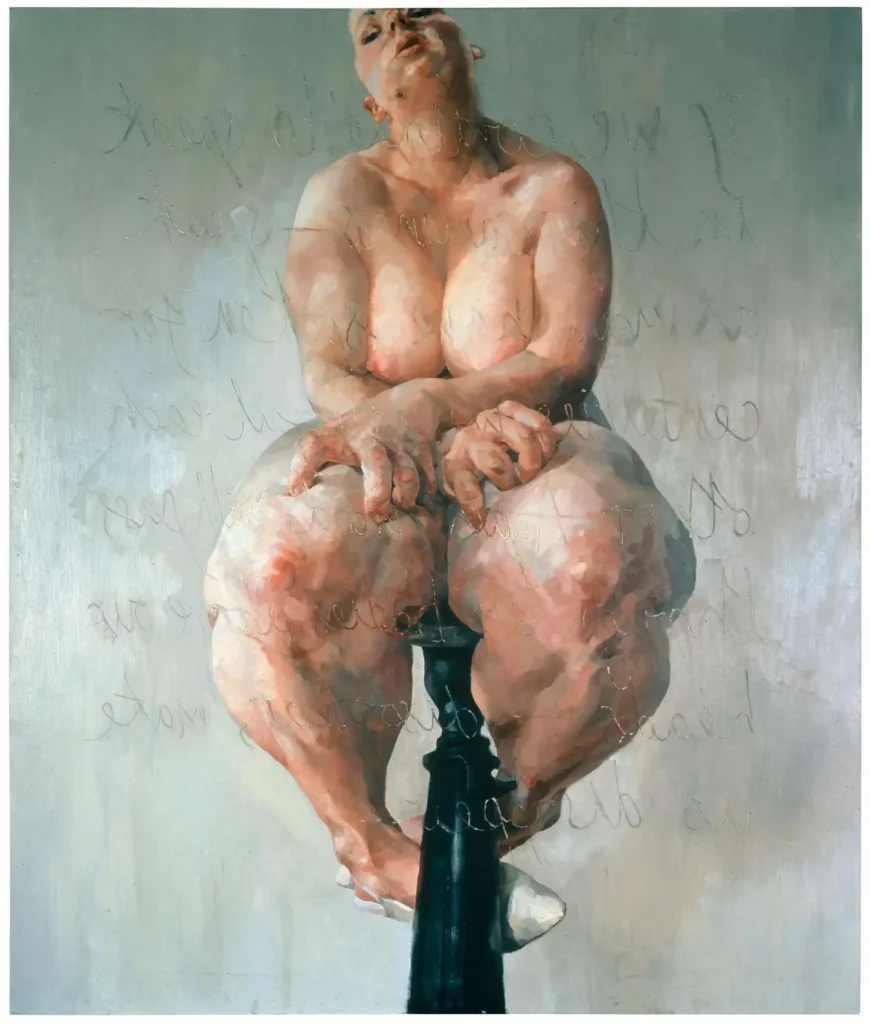Jenny Saville: The Anatomy of Painting
20th June, 2025 – 7th September, 2025
National Portrait Gallery, London
St Martin’s Place
London, WC2H 0HE
Tickets: £21, concessions available
Members go free
The British painter’s largest U.K. exhibition to date traces her visceral, decades-long exploration of the human body — from raw figuration to luminous abstraction.
Opening on 20 June, Jenny Saville: The Anatomy of Painting will be the most comprehensive museum exhibition in the United Kingdom devoted to the acclaimed British painter. Spanning more than three decades of work, the exhibition brings together 45 pieces, tracing Saville’s evolution from the early 1990s to the present day.
Curated by Sarah Howgate, Senior Curator of Contemporary Collections at the National Portrait Gallery, the exhibition has been developed in close collaboration with the artist. Presented largely in chronological order, it showcases Saville’s relentless investigation of the body, surface, and material — from her earliest self-portraits to her most recent explorations at the boundary between figuration and abstraction.

DACS 2025. Courtesy Gagosian
Saville came to public attention in the 1990s with her graduation show at the Glasgow School of Art, where she stunned audiences with large-scale, unflinching depictions of the female form. One of the most significant paintings from that period, Propped (1992), appears in the exhibition. In it, a seated figure — Saville herself — stares directly outward, legs crossed, hands gripping the flesh of her thighs. Its defiant scale and intensity foreshadow much of what was to come.
Her work stands in dialogue with a long lineage of artists. While often associated with the expressive realism of Francis Bacon and Lucian Freud, Saville’s paintings also owe much to the gestural energy of abstract painters such as Willem de Kooning and Cy Twombly. The influence of de Kooning, in particular, was pivotal. “Flesh is the reason oil painting was invented,” he once said — a belief that echoes in Saville’s dense, tactile surfaces.
That obsession with flesh is more than aesthetic. Saville has studied medical illustrations, attended surgeries, and observed reconstructive operations. “Witnessing a surgeon makes you see how layered flesh is,” she has said. “I started to think about not just the anatomy of the body, but about the anatomy of painting: the layering, the pace and tempo of the painted surface, the viscosity of the paint.”

DACS 2025. Courtesy Gagosian
The exhibition also highlights Saville’s drawing practice, a constant thread in her work. Using charcoal, pastel and pencil, she has approached subjects such as pregnancy and motherhood with the same intensity found in her paintings. These works, often inspired by the Renaissance and sculptural forms of Michelangelo, are both tender and robust.
The final section of the exhibition introduces a recent group of portraits, in which Saville pushes the language of painting further. These works, rich in colour and complexity, blur the lines between body and gesture, image and suggestion. While unmistakably hers, they mark a shift — one in which the physical merges with the intangible, the personal with the universal.
Jenny Saville: The Anatomy of Painting opens on the 20th of June, 2025 until the 7th of September, 2025 at NPR, London
©2025 National Portrait Gallery





